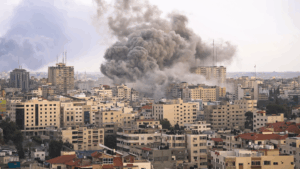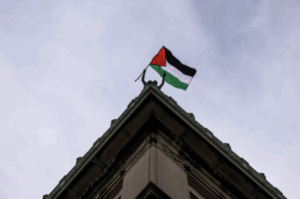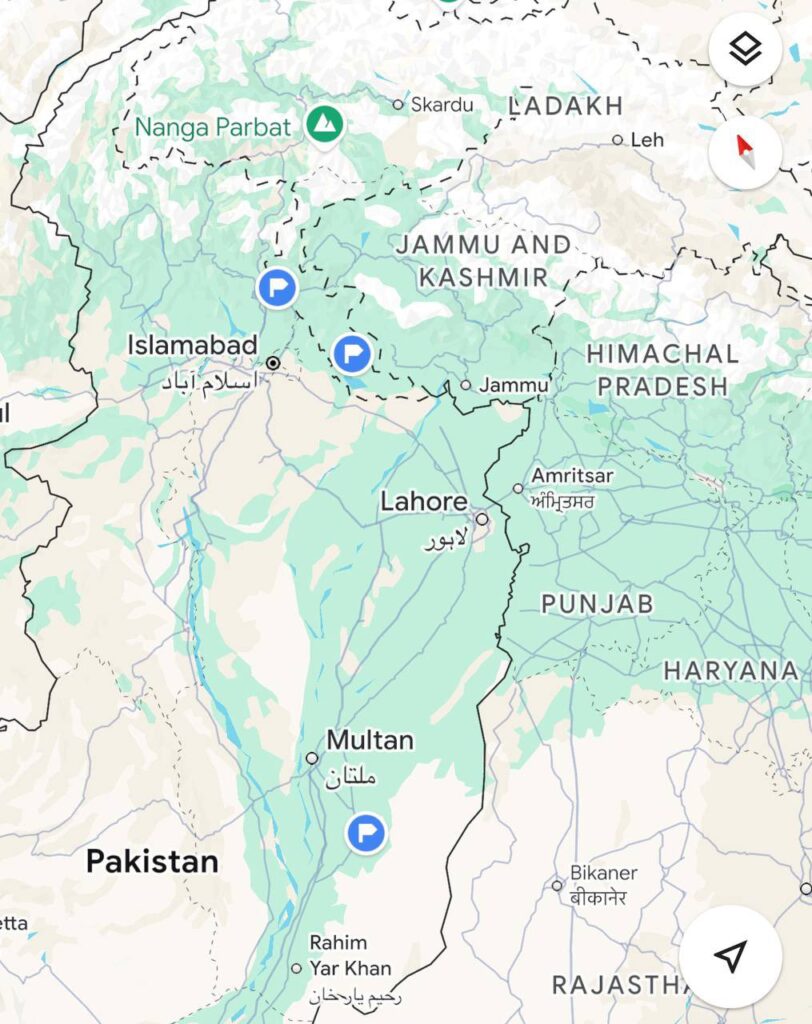India Strikes Pakistan
On May 6, 2025, India launched missile strikes on multiple locations in Pakistan and Pakistan-administered Kashmir. The attacks killed 31 people, including a three-year-old child. Several areas were heavily damaged.
This was the first time since the 1971 war that India struck Pakistan’s most populous province, Punjab. India called the operation « Operation Sindoor. » According to officials, it targeted nine sites with alleged terrorist infrastructure.
The Symbolism of “Sindoor”
India chose the name “Sindoor” as a reference to the red powder worn by married Hindu women on their foreheads. This was a symbolic tribute to the civilian massacre in April, which left many women widowed.
Through this name, India linked its military action to grief and cultural identity, presenting the operation as a response to terror, not aggression.
The Trigger: Attack in Pahalgam
India said the strikes were a direct response to a deadly attack on April 22 in Pahalgam, in Indian-administered Kashmir. During that attack, at least 26 tourists were killed by suspected militants. It was the deadliest such attack in over 25 years in the region.This attack happened while India was hosting U.S. Vice President JD Vance, adding a layer of international tension. In retaliation, India launched missile strikes, and Pakistan responded with threats. The risk of full-scale conflict between two nuclear powers has once again emerged.
Who Claimed the Attack?
A militant group called the Resistance Front (TRF) claimed responsibility for the Pahalgam attack. TRF demands independence for Kashmir. India, however, accuses TRF of being a front for the Pakistani-based group Lashkar-e-Taiba (LeT).Pakistan denied any role in the attack and called for an independent investigation. It rejected claims that it supports the group.
Water Treaty Under Threat
Following the Pahalgam attack, India suspended its participation in the Indus Waters Treaty, a key agreement regulating water sharing. This treaty is vital for Pakistan’s agriculture and water supply.
In response, Pakistan threatened to withdraw from the 1972 Simla Agreement, which frames diplomatic relations between the two countries. Diplomatic ties were further damaged as both sides expelled each other’s citizens and reduced formal relations.
Kashmir: A Long-Disputed Land
A Region in Conflict Since 1947
Kashmir is a mountainous region in the north of the Indian subcontinent. Its sovereignty has been disputed since the end of British rule in 1947. The princely state of Jammu and Kashmir chose to join India, leading to the first India–Pakistan war.
Today, Kashmir is divided between India (Jammu and Kashmir, Ladakh), Pakistan (Azad Kashmir, Gilgit-Baltistan), and China (Aksai Chin). This division continues to be a major source of conflict.
Wars and Constant Tensions
India and Pakistan have fought for three wars over Kashmir: in 1947–48, 1965, and 1999. The Kargil War in 1999 was especially serious, as Pakistani soldiers and militants crossed the Line of Control (LoC). India launched a military offensive with U.S. diplomatic support. Since then, the region has seen frequent skirmishes, though no full-scale war. The risk of nuclear escalation is always present, since both countries have had nuclear weapons since the 1990s.
Revoking Kashmir’s Autonomy in 2019
For decades, Jammu and Kashmir had a special status in India’s constitution under Article 370, which gave it political autonomy. In August 2019, the Indian government revoked this status.This move sparked a major crisis with Pakistan, which called it an annexation. India imposed a curfew, cut internet access, and increased its military presence. Human rights concerns were raised internationally, as local populations were cut off from the outside world for months.
Armed Insurgency and Militancy
Since the 1980s, Indian-administered Kashmir has seen a violent insurgency. The rebels include separatists and Islamist militants. Some seek independence, others want to join Pakistan.India blames Pakistan for supporting these groups with training, weapons, and safe havens. Attacks like the 2019 Pulwama bombing, which killed 40 Indian soldiers, have escalated tensions. India responded with airstrikes inside Pakistan, the first since 1971. Pakistan denies direct involvement, but its ties to such groups remain controversial.
For more information : TOURISTS ATTACKED IN KASHMIR: WHAT HAPPENED IN PAHALGAM
The Indus River: A Strategic Lifeline
Beyond politics and religion, Kashmir is critical because of its water resources. The Indus River, essential for Pakistan’s farming and daily life, originates in Indian Kashmir.The 1960 Indus Waters Treaty, brokered by the World Bank, regulates how the river is shared. However, India’s dam projects and military activity near the river worry Pakistan. Water has become a strategic weapon and a new front in this long-running conflict.
The International Response
India sees Kashmir as a domestic issue and rejects foreign mediation. Pakistan, however, wants to internationalize the conflict. It has appealed to the UN, the OIC, and Western countries.UN resolutions from the 1950s called for a referendum in Kashmir, but it never happened. Today, most global powers, including the U.S. and China, prefer a neutral stance to avoid making the conflict worse.
India’s Justification for the Strikes
India said the strikes were aimed at destroying terrorist infrastructure. It named groups like Lashkar-e-Taiba and Jaish-e-Mohammed, which carried out the 2019 Pulwama suicide attack.India’s Foreign Minister Vikram Misri said the missile strikes were necessary to prevent future attacks and disrupt terror networks.
Pakistan’s Reaction
Pakistan condemned the strikes as unprovoked and said they targeted civilians. According to military spokesperson Chaudhry, India launched 24 missile strikes on six locations.He reported that mosques and residential neighborhoods were hit, killing at least 31 civilians, including women and children. Dozens more were injured.
Conclusion
The renewed India–Pakistan conflict over Kashmir highlights the region’s volatility and complexity. Historical grievances, militant violence, and strategic interests—like water resources and territorial claims—keep the region on edge. As both nations reduce diplomatic ties and escalate military actions, the risk of a broader war remains dangerously high. The world watches closely, but without firm international mediation, a lasting solution still seems out of reach.










